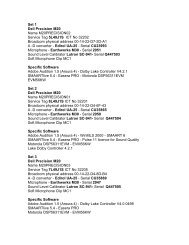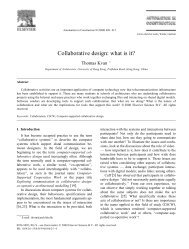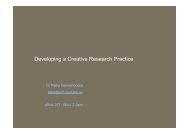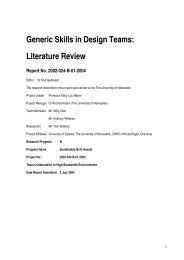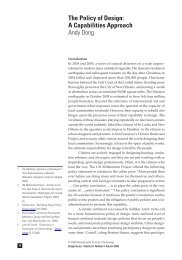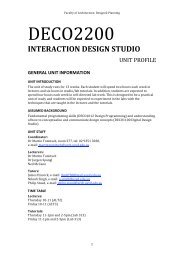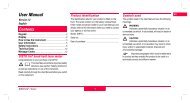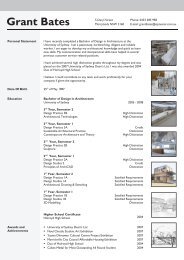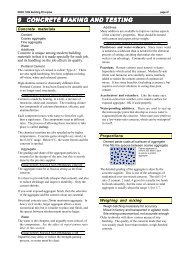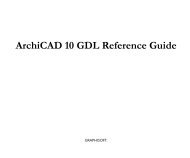bruel & kjaer 2240 sound level meter
bruel & kjaer 2240 sound level meter
bruel & kjaer 2240 sound level meter
You also want an ePaper? Increase the reach of your titles
YUMPU automatically turns print PDFs into web optimized ePapers that Google loves.
26<br />
Integrating-averaging Sound Level Meter Type <strong>2240</strong> – User Guide<br />
When taking measurements, you will often find instructions in local regulations concerning the<br />
particular measurement, which of course, you must always follow. This chapter provides general<br />
hints and guidelines that are useful when no specific instructions are available.<br />
How to Hold the Instrument<br />
All objects present in the <strong>sound</strong> field where you are taking measurements exert some influence<br />
on the <strong>sound</strong> field and, to some extent, have an effect on the values you measure. One of the<br />
objects present is your body, which can either reflect or block <strong>sound</strong>s. To minimise the effect of<br />
your own presence:<br />
1) Point the <strong>sound</strong> <strong>level</strong> <strong>meter</strong> towards the <strong>sound</strong> source.<br />
2) Hold the instrument away from your body, at arm’s length.<br />
Measuring in Free or Diffuse Sound Fields<br />
There are two types of <strong>sound</strong> fields you should be aware of: free and diffuse. In a free <strong>sound</strong><br />
field – for example, out of doors away from reflecting surfaces – <strong>sound</strong>s arrive from one<br />
principal direction. In a diffuse <strong>sound</strong> field, such as in a reverberant room, <strong>sound</strong>s arrive randomly<br />
from all angles (random incidence). Specific microphones are used in each condition to<br />
ensure accurate measurements and a uniform response at all frequency ranges. For free-field<br />
measurements, the <strong>sound</strong> <strong>level</strong> <strong>meter</strong> should be fitted with a microphone with a free-field<br />
response. During diffuse-field measurements, a microphone with a random-incidence response<br />
should be used. However, you must always follow the relevant standard's requirements to<br />
ensure complete measurement compliance, for example: IEC standards specify the use of <strong>sound</strong><br />
<strong>level</strong> <strong>meter</strong>s with a free-field response, while the American ANSI standards call for a randomincidence<br />
response.<br />
Your Type <strong>2240</strong> is fitted with a free-field microphone. However, if your local standards require<br />
the use of a random-incidence response, it is possible to fit your microphone with the supplied<br />
Random-incidence Corrector DZ 9566 (Fig.5.7).<br />
Fig.5.7<br />
DZ 9566 Randomincidence<br />
Corrector<br />
Under free-field or near free-field conditions you simply point the <strong>sound</strong> <strong>level</strong> <strong>meter</strong> towards<br />
the <strong>sound</strong> source. However, if you have fitted the Random-incidence Corrector and want to<br />
measure with a free-field response, you must orient the instrument at an angle of 70 – 80 ° to the<br />
<strong>sound</strong> source; if pointed directly at the source, the result will be too high, especially if high<br />
frequencies are prominent. Conversely, if you use a free-field response in a diffuse <strong>sound</strong> field<br />
the <strong>sound</strong> pressure will be underestimated.



